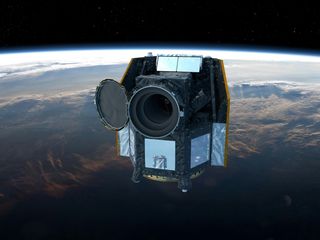Looking into the heart of exoplanets
CHEOPS (Characterising ExOPlanet Satellite) is providing data to better understand the make-up of exoplanets that orbit nearby stars. This was the first European Space Agency (ESA) satellite produced by Airbus in Spain, and is designed to seek out small planets that are similar to Earth and study them in great detail, with the aim of verifying whether some could support life.
Observing stars that are known to harbour planets
The 300-kg CHEOPS spacecraft was built by an Airbus-led consortium of 24 companies from 11 European countries, working under ESA’s tight schedule for launch at the end of 2019.
The satellite’s exoplanet-analyser is a Ritchey-Chrétien telescope supplied by the University of Bern, Switzerland and integrated on Airbus’ platform that already has been successfully used on high-profile Earth imaging programmes.
CHEOPS is focussing its attention on the gleam of known stars, detecting the decrease that occurs when a planet passes in front of it. This enables CHEOPS to precisely measure the size of the planet, as well as determine what it is made of. Once a planet’s mass is known, the density can then be calculated – giving an idea of its internal structure, formation and evolution.
The CHEOPS spacecraft is over its initial operational lifetime of 3.5 years. It is performing its mission from a Sun-synchronous orbit around the Earth at an altitude of 700 km. It was lifted by a Soyuz launcher in December 2019 from the spaceport in French Guiana.
The latest CHEOPS news
In the spotlight
-

News Space
ESA validates preliminary design of Ariel exoplanet spacecraft built by Airbus
Airbus has successfully passed the Preliminary Design Review of Ariel. This ESA mission will study exoplanets's atmospheres -

Press releases Space
ESA selects Airbus for exoplanet mission Ariel
-

Press releases Company
Airbus successfully completes In Orbit Commissioning of CHEOPS
-

Press releases Space
Airbus-built CHEOPS satellite successfully launched on Soyuz
-

Press releases Company
Airbus built CHEOPS satellite flies to Guiana
















